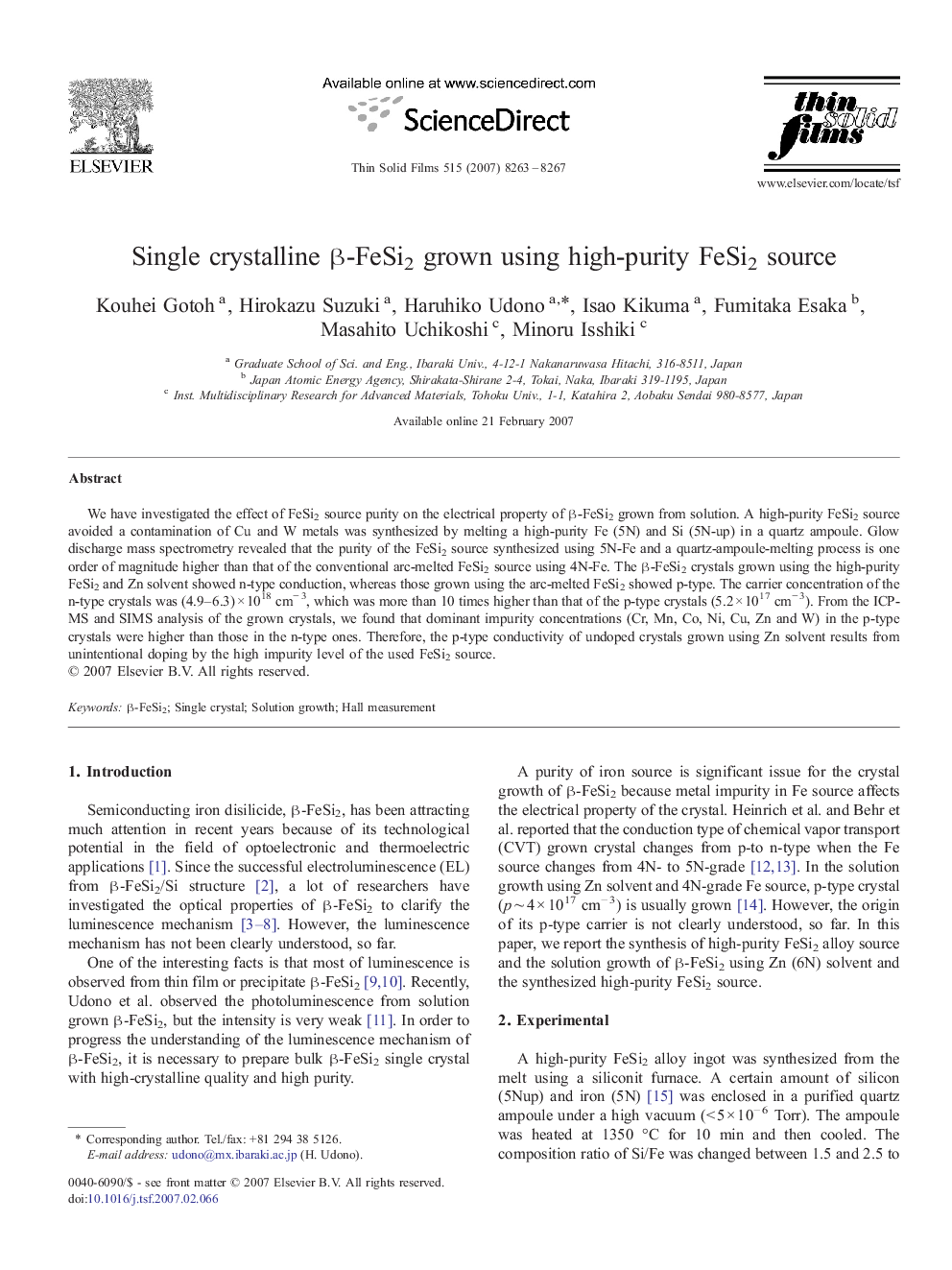| Article ID | Journal | Published Year | Pages | File Type |
|---|---|---|---|---|
| 1674233 | Thin Solid Films | 2007 | 5 Pages |
We have investigated the effect of FeSi2 source purity on the electrical property of β-FeSi2 grown from solution. A high-purity FeSi2 source avoided a contamination of Cu and W metals was synthesized by melting a high-purity Fe (5N) and Si (5N-up) in a quartz ampoule. Glow discharge mass spectrometry revealed that the purity of the FeSi2 source synthesized using 5N-Fe and a quartz-ampoule-melting process is one order of magnitude higher than that of the conventional arc-melted FeSi2 source using 4N-Fe. The β-FeSi2 crystals grown using the high-purity FeSi2 and Zn solvent showed n-type conduction, whereas those grown using the arc-melted FeSi2 showed p-type. The carrier concentration of the n-type crystals was (4.9–6.3) × 1018 cm− 3, which was more than 10 times higher than that of the p-type crystals (5.2 × 1017 cm− 3). From the ICP-MS and SIMS analysis of the grown crystals, we found that dominant impurity concentrations (Cr, Mn, Co, Ni, Cu, Zn and W) in the p-type crystals were higher than those in the n-type ones. Therefore, the p-type conductivity of undoped crystals grown using Zn solvent results from unintentional doping by the high impurity level of the used FeSi2 source.
